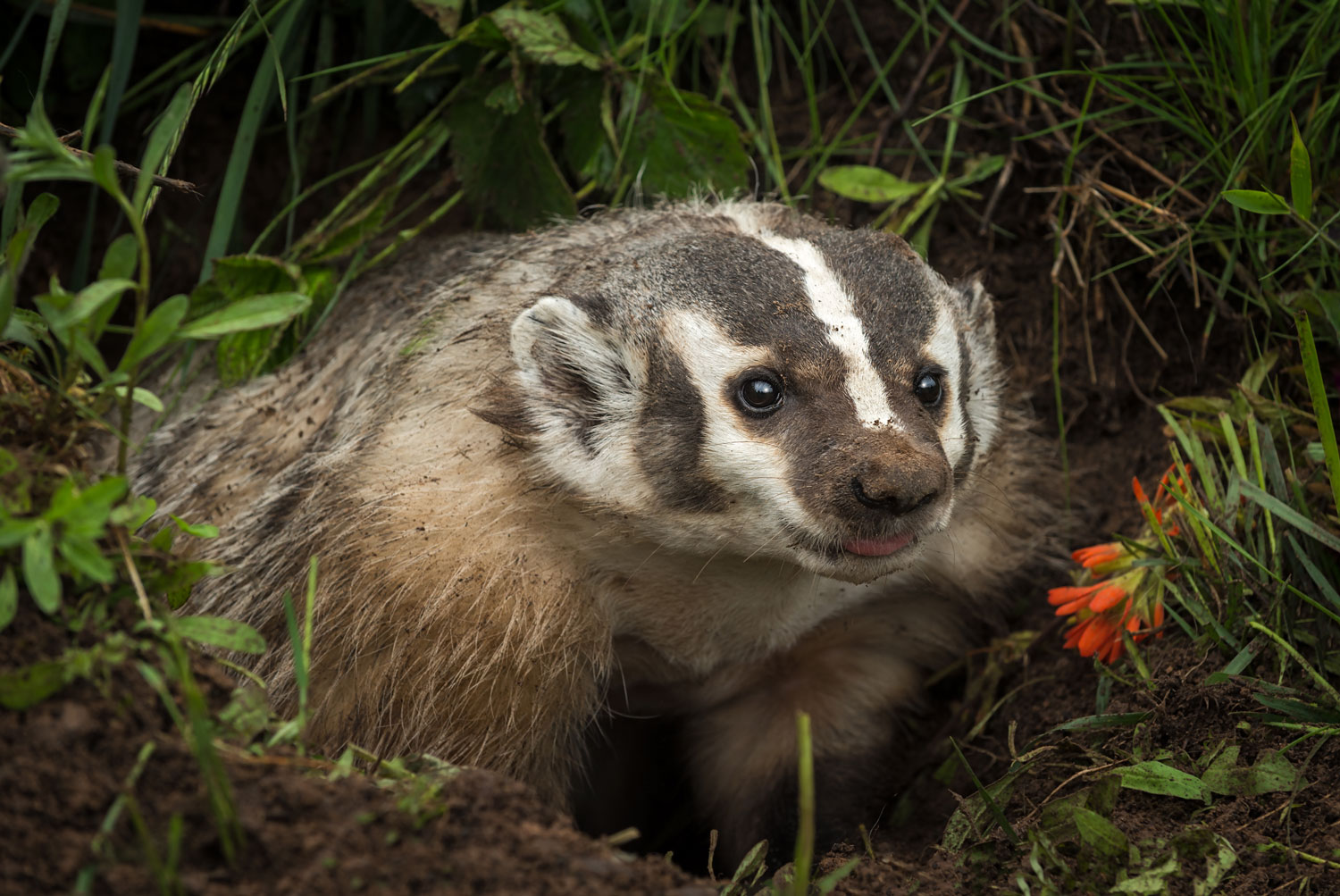Creature feature: American badgers are digging machines

The American badger is one of the lesser-known creatures of Illinois, not seen as often as many other mammals, although they live all across our state.
Badgers mostly disappeared from Illinois by the late 1800s, largely because farmers and land owners killed them to prevent them from burrowing in the ground, possibly causing injuries to cows, horses and other livestock, according to the Illinois Department of Natural Resources. By the 1950s, their population had recovered and they even extended their range within the state.
READ MORE IN OUR CREATURE FEATURE SERIES
Badgers are related to weasels, and they are exceptional diggers, a skill they use both to build burrows for sleeping and also for hunting. They are mostly nocturnal, according to the University of Michigan's Animal Diversity Web. While they don't truly hibernate, you aren't likely to see a badger out and about in winter. In the coldest parts of the year, badgers are inactive for long stretches of time, emerging from their dens only on warmer days.
Here's more information about these digging machines.
The name game
The badger family includes 11 animals, but only the American badger is native to North America, which is referenced in its common name, according to the World Animal Foundation. Other badgers include the European badger, which is native to Europe, and the more well-known honey badger, which lives in parts of Asia and Africa.
Our neighbor to the north, Wisconsin, is known as the Badger State, and the University of Wisconsin-Madison sports teams are known as the Badgers, represented by their popular mascot Bucky Badger. Although Wisconsin proudly embraces its badger nickname, it didn't come about because the state is home to a particularly high population of the animals. Instead, it hearkens back to the state's history, according to Travel Wisconsin. About 200 years ago, in the 1820s, mining was a big industry in the state. This led to workers build temporary homes or shelters by digging caves into rock mines. The digging was similar to how badgers dig into the earth, which gave rise to the nickname "badger boys," a name that stuck and became part of the state's identity.
Physical characteristics
Badgers are easy to identify because of the prominent white stripe that extends from their noses up to their heads and sometimes onto their necks and backs. They also have white markings around their cheeks and ears, IDNR reports. Their fur is otherwise gray or grayish brown, sometimes with a yellowish tint.
A badger's body is built for digging. They are short and squatty, and their front feet have claws that can be as much as 2 inches long. The front feet are also partially webbed, allowing badgers to scoop dirt. They also have strong muscles in their necks and shoulders to allow them to dig quickly.
Male badgers are larger than females, according to the Animal Diversity Web. The animals are typically between 25 inches and 35 inches long and can weigh between 8 pounds and 26 pounds.
Where they live
The native range for American badgers includes parts of the United States, Mexico and Canada, according to the Animal Diversity Web. In the United States, they mainly live in the plains states and parts of the west where the habitat is suitable. Badgers live across Illinois, but their population is higher in the northern half of the state, particularly in the sand prairie areas in the northwest and central portions of the state.
Badgers prefer open grassland areas, including meadows, prairies, fields and pastures. In Illinois, open grasslands are not as common as they once were, when much of the state was covered in prairie. As a result, some badgers have taken to cemeteries, open crop fields, ditches and railroad rights of way, IDNR reports.
What they eat
Badgers are omnivores, but they are mostly carnivorous. In northern Illinois, they mainly eat mice, ground squirrels, woodchucks and voles, according to IDNR. Elsewhere, they include small mammals such as pocket gophers, prairie dogs and marmots in their diet. Other food sources include birds, reptiles, amphibians, fish, carrion and some plant foods, such as mulberries, corn and seeds.
Most predators stalk their prey over land, but badgers have a different hunting technique. Because they are excellent diggers, they catch most of their food by digging into tunnels and burrows, the Animal Diversity Web reports. They will sometimes store, or cache, food when they catch more than they can eat.
Why they matter
Badgers consume a wide variety of animals, making them important in the ecosystem, according to the Animal Diversity Web. They help control the population of rodents and other small mammals and also eat carrion, which helps keep the environment clean. Their burrows also provide cover and shelter for other animals.
Badgers are known to hunt cooperatively with coyotes, a relationship that benefits both species by making more rodents available to them, Animal Diversity Web reports. The badgers are adept at getting into burrows and flushing out rodents, and the coyotes are able to chase down the rodents on land.
